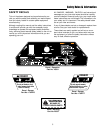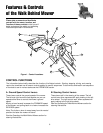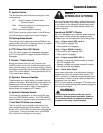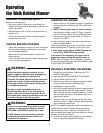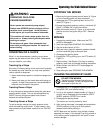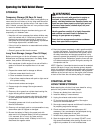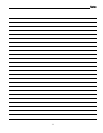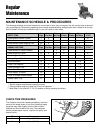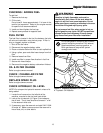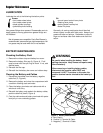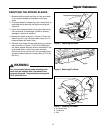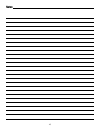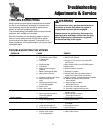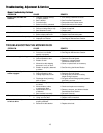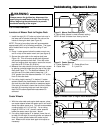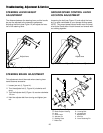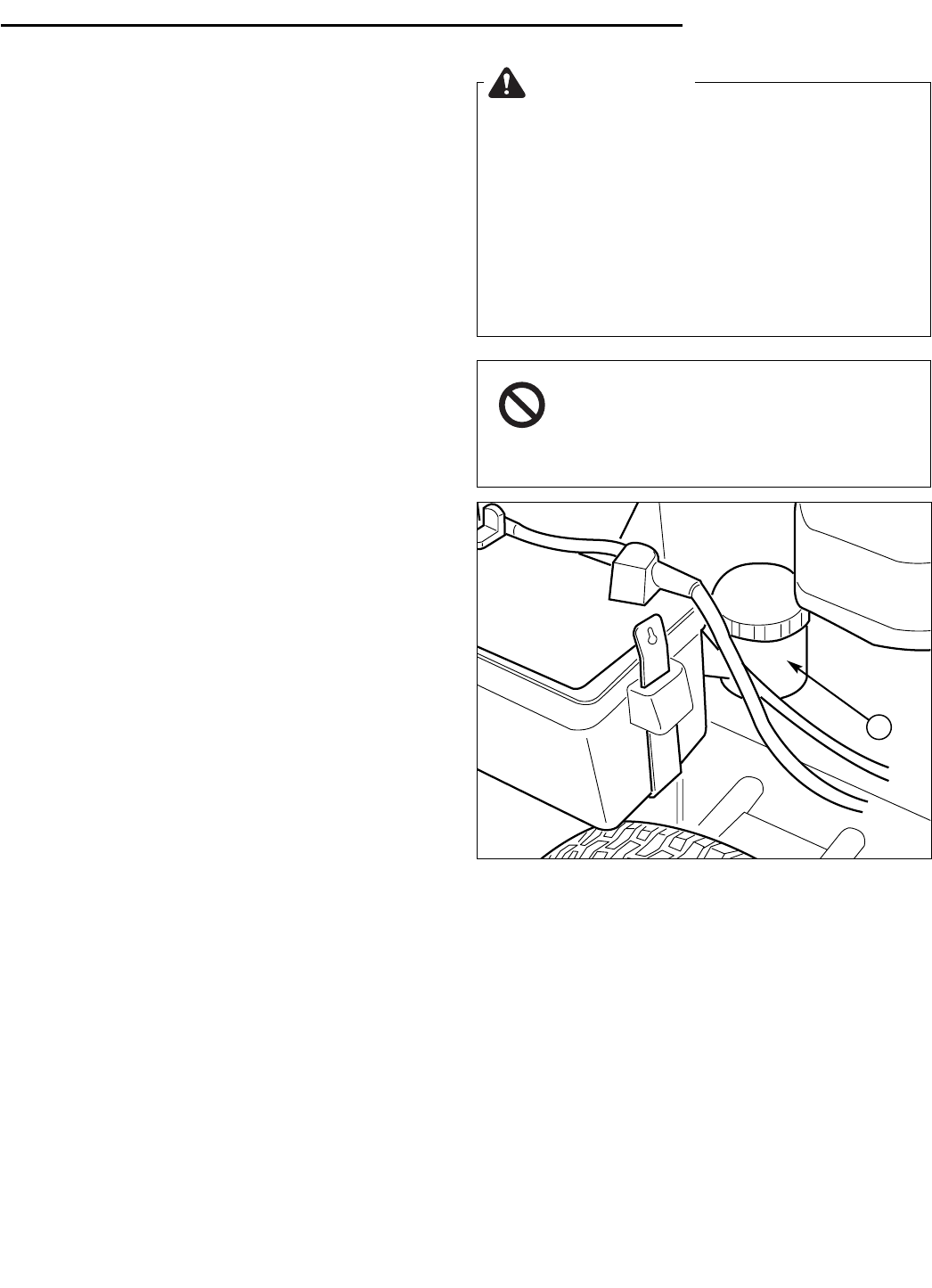
CHECKING / ADDING FUEL
To add fuel:
1. Remove the fuel cap.
2. Fill the tank.
Do not overfill. Leave approximately 1” of room in the
tank for fuel expansion. Refer to your engine manual
for specific fuel recommendations.
3. Install and hand tighten the fuel cap.
4. Repeat same process for opposite tank.
FUEL FILTER
The fuel filter is located in the fuel line between fuel shut
off valve and carburetor, near the fuel pump. If filter is
dirty or clogged, replace as follows:
1. Shut off the fuel valve.
2. Disconnect the negative battery cable.
3. Place a container below the filter to catch spilled fuel.
4. Using a pliers, open and slide hose clamps from fuel
filter.
5. Remove hoses from filter.
6. Install new filter in proper flow direction in fuel line.
7. Secure with hose clamps.
8. Reconnect the negative battery cable when finished.
OIL & FILTER CHANGE
Refer to engine owners manual.
CHECK / CHANGE AIR FILTER
Refer to engine owners manual.
REPLACE SPARK PLUG
Refer to engine owners manual.
CHECK HYDRAULIC OIL LEVEL
NOTE: Do not open the hydraulic reservoir unless oil is
being added.
1. Locate the oil reservoir on the left side of the
machine, mounted to the fuel tank heat shield.
2. Look at the oil reservoir (A, Figure 3) and observe
the oil level. The oil level should not exceed 1” of oil
in the reservoir while cold.
3. If necessary, open the reservoir and add S.A.E. 20W-
20 motor oil. Make sure area around the reservoir is
free of dust, dirt, or other debris.
WARNING
Gasoline is highly flammable and must be
handled with care. Never fill the tank when the
engine is still hot from recent operation. Do not
allow open flame, smoking or matches in the area.
Avoid over-filling and wipe up any spills.
Do not remove fuel filter when engine is hot, as
spilled gasoline may ignite. DO NOT spread hose
clamps further than necessary. Ensure clamps
grip hoses firmly over filter after installation.
Do not use gasoline containing METHANOL,
gasohol containing more than 10% ethanol,
gasoline additives, premium gasoline, or
white gas because engine/fuel system
damage could result.
Regular Maintenance
Figure 3. Checking Hydraulic Oil Level
A. Hydraulic Oil Reservoir
A
13



